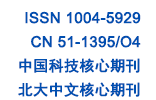


In recent years, the use of surface-enhanced Raman spectroscopy (SERS) technology to detect biological samples has become a hot topic. Significantly, the application of SERS technology combined with machine learning methods in clinical sample diagnosis has become increasingly mature. Machine learning methods based on unsupervised and supervised algorithms to solve complex samples and large, high-dimensional data, have received high attention. This review describes the relevant applications of SERS technology combined with machine learning methods, especially in the biomedical field. SERS can detect fingerprint information of biological samples using label-free strategies, or indirect SERS detections for tracking biomarkers such as proteins. This review summarizes SERS technology combined with machine learning for disease diagnosis in clinical samples such as blood, urine, and biotissues. In addition, we also summarize their applications on many cellular samples and other complex samples. An overview of the latest advances in this field is provided and this study offers a reference that can be followed by researchers working in SERS bioanalysis.
Surface-enhanced Raman Scattering (SERS) is an analytical method based on molecular vibration fingerprint information, which has high sensitivity, good selectivity, nondestructive and on-site detection, and is free from the interference of water system. It has potential application in the fields of biological analysis and early diagnosis. Compared with natural enzyme, nanoenzyme as an artificial mimic enzyme presents the advantages of easy and scalable preparation, diversity of enzymatic activity via rational design as well as long-term environmental stability. Metal-organic framework (MOF) with mesoporous crystal structure, large specific surface area could be easily synthesized, which is beneficial to immobilization of other nanomaterials to improve stability and realize the multifunctional performance. This short review concerns on nano-enzyme, MOF and SERS substrate assembly to advance the figure of analytical merit, and focuses on the current explorations of MOF/nanozyme/SERS platform in the field of biomedical analysis and prospects.